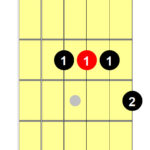Many guitar enthusiasts, like yourself, often wonder about the best way to showcase their prized instruments at home. The desire to display a beautiful guitar, especially a vintage or unique piece, is understandable. Having your guitar on display isn’t just about aesthetics; it’s also a fantastic way to encourage yourself to play more often. Imagine your handsome resonator guitar hanging on the wall, ready to be picked up at a moment’s notice. This accessibility can be a real motivator for practice and playing, turning your instrument into a readily available creative outlet.
However, as with any valuable instrument, concerns about safety and potential damage are valid. The most secure environment for any guitar is undoubtedly its case, stored in a stable and controlled space. But for display purposes, wall hangers often emerge as a superior option compared to floor stands. Floor stands, while convenient, can be easily knocked over by pets, guests, or even yourself, potentially leading to serious damage like headstock breaks or body dents. Elevating your guitar to the wall, using a reliable guitar wall hanger, significantly minimizes these risks by keeping it out of harm’s way.
The core question is whether hanging a guitar by its headstock will cause any detrimental effects. Fortunately, the answer is generally no. The weight exerted downwards by the guitar is minimal compared to the immense tension the strings apply in the opposite direction to the neck. Therefore, hanging a guitar by its headstock is widely considered a safe method. When choosing a guitar wall mount, ensure it’s designed to accommodate your guitar’s headstock shape and that all contact points are padded with a soft, inert material. This padding is crucial to protect your guitar’s finish from scratches or chemical reactions.
One critical aspect to consider, regardless of how you store your guitar, is humidity. Even steel-bodied resonator guitars are susceptible to humidity fluctuations. Ideally, a stable environment of around 70 degrees Fahrenheit and 50 percent relative humidity is recommended. However, maintaining this perfect balance can be challenging. Investing in an inexpensive hygrometer is a wise move. Monitor the humidity levels in the room where your guitar is displayed, especially during seasonal changes and when using heating or air conditioning. If humidity drops too low, particularly in winter when heating systems dry out the air, consider using a humidifier in the room to maintain optimal conditions and prevent issues like cracks or warping. Regularly checking humidity levels will help you determine if displaying your guitar is suitable in your environment or if case storage with humidity control is a better approach for that particular instrument.
Ultimately, a guitar is meant to be played and enjoyed. While taking precautions to protect your instrument is important, keeping it accessible and in view can significantly increase your playing time and appreciation for your guitar. Choosing a quality guitar wall hanger and monitoring humidity levels allows you to safely display your guitar, turning it into both a piece of art and a readily available musical companion.

